
7 water-based exercises to help you stay active this summer
Note: The exercises and/or stretches in this blog are not intended to replace the advice of your clinician. If you are unsure, please speak to your clinician before attempting any of the suggestions below.
Summer is in full swing! Whether you are in the pool or at a nearby lake, water-based exercises are a great way to build strength, get your body moving, and stay active while keeping cool. They're also great for all fitness levels!
Remember to have fun and stay safe while in the water! Ensure that you familiarize yourself with the body of water and the changes in depth before you begin your workout and try to work-out with a partner or with an on-duty lifeguard whenever possible.
Here are some reasons why water exercises are good for you:
There is low impact on your joints
Water gives you buoyancy which allows you to float. This allows you to exercise without putting too much pressure on your joints. This is particularly beneficial for those recovering from broken bones or surgery, or for individuals who suffer from joint related problems such as osteoarthritis.
It’s good for circulation and heart health
Exercising in the water has been shown to decrease blood pressure by helping relax blood vessels so that the blood can be carried more easily. Thus, it may be a good alternative to land-based exercise for those with high blood pressure.
It can help you build muscle strength and endurance
Water has greater resistance than air, making it harder to move through. It’s also easily adjustable! The position of your body, the depth of water, and the speed that you move will impact how much resistance you are working against.
This resistance is good for building strength and endurance.
There is less risk of injury
Water based exercise can be great for individuals with issues that impact bone density, such as osteoporosis or for those who are concerned about falls. The water gives you buoyancy meaning that if you were to fall, the water would support you so there is less worry about injuring yourself.
The water will keep you cool
Exercising in cool water reduces the likelihood of overheating, allowing you to exercise for longer.
Water exercises can be deceiving. It may seem easy while you are exercising, only to find yourself exhausted after you come out of the water. Like any exercise, it’s important that you warm up beforehand.
Below, you’ll find 7 exercises that can help you stay active in the water this summer. For most of these exercises, the water level should be between hip and shoulder height.
Remember to start slow and progressively increase the difficulty as your body becomes more accustomed to the exercise.
1. Warm up
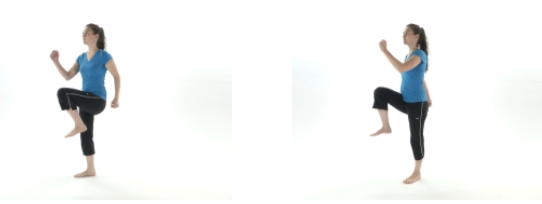
Stand in the water with your feet hip width apart.
March on the spot. Swing your arms and lift your knees as high as you can.
Keep your body straight as you do the exercise.
Repeat for 1 minute.
You can increase the intensity by speeding up your movements, or by increasing the depth of water up to about shoulder height.
2. Side shuffle
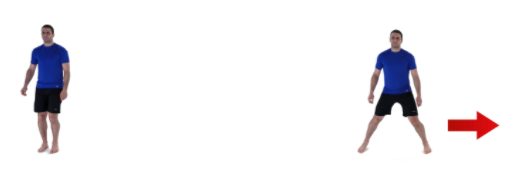
Start by standing tall.
Step sideways with one foot, then step with your opposite foot to bring your feet together.
Take 10 steps in each direction.
Increase the difficulty of this exercise by increasing your speed or the depth of water you are in.
3. Arm curls
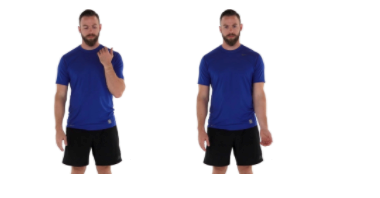
Stand with both arms at your sides in water what is around shoulder height.
While keeping your elbow at your side, bend your elbow, bringing your hand towards the same shoulder.
Perform 10 repetitions on each side.
Add resistance to make this exercise more difficult by cupping your hand with your palm facing upwards or increasing the speed of the movement.
4.Bodyweight squat
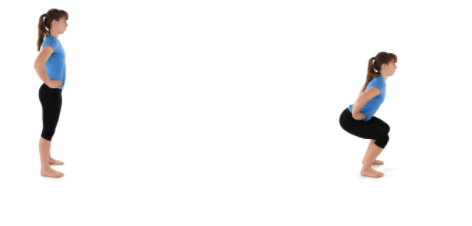
Stand in water that is around waist height with your feet shoulder width apart and your hands on your hips.
Push your hips back and squat as if you were sitting on a chair.
Lift back up by pushing through the bottoms of both feet and repeat 10 times.
You can increase the difficulty of this exercise by performing the movement in shallower water. For individuals who prefer to stay in deeper water to minimize the load on their joints, you can increase the resistance by performing the squat with your arms stretched out in front of you or increase the speed of the movement.
5. Arm raise fly
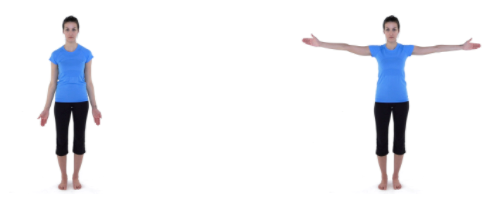
Stand so the water is around shoulder height.
Lift both arms to the sides, keeping your thumbs up.
Tip: add resistance by opening your hand and keeping your palms facing the ground throughout the movement.
Once your arms are at shoulder height, face your palms forward.
Bring your hands together in front of you while keeping your arms straight.
Open your arms back out to the sides and then lower back to starting position.
Repeat 10 times.
You can increase the difficulty of this exercise by increasing the speed of your movements.
6. Leg kicks
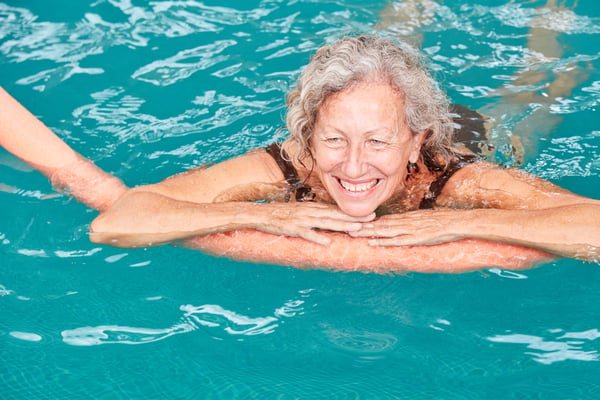
Place a pool noodle behind your back and hold under both arms.
Lean back onto the pool noodle so that you are floating on your back with your legs under the water.
Flutter kick your legs for a count of 10.
Scissor kick your legs open and closed for a count of 10.
Keep your core tight throughout the whole movement.
Repeat 2 times.
You can alter the difficulty of this exercise by increasing the speed of the movements.
7. Single leg balance
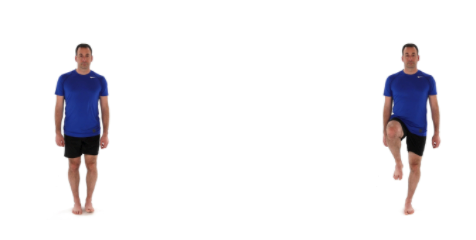
Stand on one leg by raising your opposite knee to hip level.
Use the edge of the pool, or floating device for support as needed.
Hold for 30 seconds and repeat on the opposite leg.
You can increase the difficulty of this exercise by moving to more shallow water, or by closing your eyes. If you are doing these exercises at the beach or in a lake, the movement of the water will also increase the difficulty.
As with any type of exercise program, it’s important to consult a healthcare professional before beginning as some pre-existing conditions may pose higher safety concerns.
If you’re interested in setting up an in-depth assessment with a clinician, book an appointment online or check our locations page to find a clinic near you.
Curious for more? Click here to learn more water-based exercises.
This blog was written by Emily Karageorgos, a Physiotherapy student at The University of Toronto



